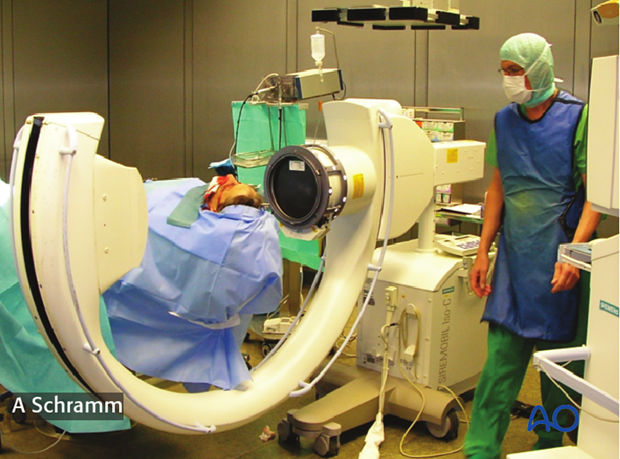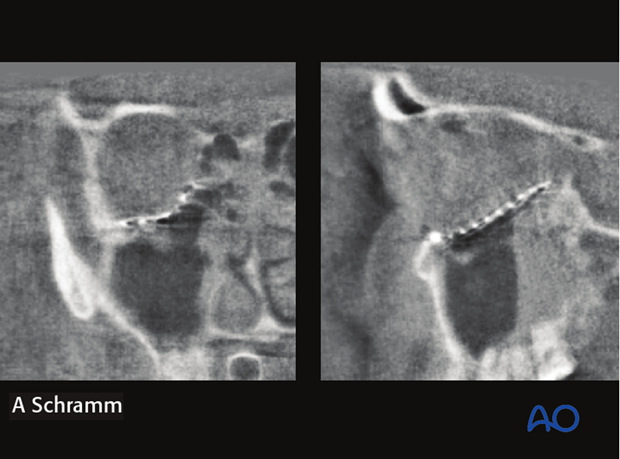Intraoperative imaging
1. Introduction
Indications
Whenever an intraoperative CT scanner is available, an intraoperative scan should be obtained for intraoperative evaluation of the reconstruction.
Any orbital fracture benefits from intraoperative CT scanning to visualize adequacy of orbital wall reconstruction.
When using computer assisted surgery, the reduction (and fixation if necessary) is performed according to standard procedures as described in the AO Surgery Reference. It should be considered an adjunct to surgical treatment.
Computer assisted surgery in treating orbital fractures allows intraoperative visualization of the reconstruction using intraoperative imaging combined with image fusion of preoperative and intraoperative CT scans.
In simple orbital floor fractures radiopaque material for orbital wall reconstruction can easily be visualized by intraoperative imaging resulting in intraoperative or postoperative verification of implant placement.
With this technique, insufficient orbital reconstruction can be can be identified and corrected, eliminating the need for secondary procedures which may be necessary if only postoperative imaging is performed.
Intraoperative imaging requires an additional 10-15 min.
Computer assisted orbital reconstruction planning
Reconstruction of complex orbital wall defects may benefit from preoperative virtual insertion of anatomically preformed orbital implants.
Some complex zygomatico-orbital defects may require patient specific implants for alloplastic reconstruction of orbital walls. This can be performed by transferring virtual preoperative planning into CAD-CAM tools to create patient specific alloplastic implants or by pre-bending standard implants with the use of stereolithographic models either from patients' anatomy or from virtually preplanned reconstruction.
Useful additional reading
2. Intraoperative assessment of reconstruction
To verify that the orbit has been properly reconstructed, a CT scan is performed intraoperatively.

The correct anatomic shape of the titanium mesh used for orbital floor reconstruction can be verified in the intraoperative CT scan. This confirms that there is no need for further corrections in this case.
In case the orbital floor is not properly reconstructed, correction of shape and position of the implant is recommended followed by a second intraoperative CT-scan.
This technique can be used for all orbital wall reconstructions with radiopaque material.













